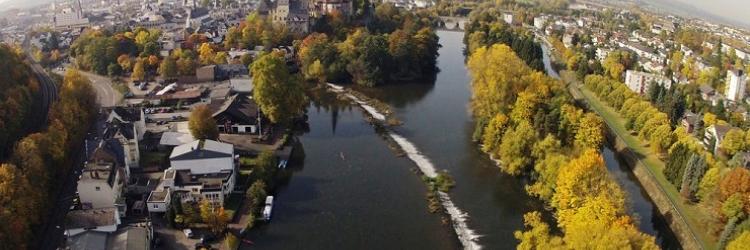Other Comments: 0 May 15, 2017
Limburg is a town in the district of Limburg-Weilburg in Hesse and with about 34,000 inhabitants is also its most populous city. Due to its location, Limburg has a central function for the sparsely populated western part of Hesse, as well as for parts of the Western Forest District (Westerwaldkreis) and the Rhine-Lahn District in the state of Rhineland Palatinate.
The city is mainly known for its dioecese that goes by the same name with its Cathedral church, late Romanesque St. Georg's Cathedral, and Limburg South Train Station on the Cologne -Rhine/Main high-speed line.
The Limburg Cathedral, also known as St. Georg’s Cathedral, is situated above the Old Town next to Limburg Castle. Due to its high position above the river Lahn, the cathedral is visible from afar. The basilica is considered to be one of the most elaborate structures of late Romanesque. The original church was probably built from the year 910 onwards. The construction of the present cathedral began between 1175 and 1200. The inauguration ceremony took place in 1235 and was lead by Trier Archbishop Theoderich von Wied. The Cathedral is a three aisled basilica connecting late Romanesque and early Gothic styles featuring seven towers. Public guided tours through the Cathedral are offered from 11 am and 3 pm on Tuesdays to Fridays, on Saturdays at 3 pm and on Sundays at 11.45 am; The entrance fee costs 3 euros.
The Lahn shore with the Old Lahn Bridge from which one has a beautiful view of the Cathedral. This first stone bridge was built between 1315-1354, but it was partly destroyed in 1945 and expanded and rebuilt in 1946-47. A walk on the Lahn shore is equally worth of visiting. There is also the historic Obermühle, which today is a pub with a beer garden. Not far from the Obermühle is the pier for the passenger ship "Wappen von Limburg" with which one can take trips to Dietkirchen, Balduinstein and the Oranienstein Castle.
The impressive Old Town with its numerous restored half-timbered houses and one of Germany's oldest houses is famous worldwide. While in the Old Town, it is highly recommended to visit the following:
Gothic House Römer is a national monument. It was built in 1289 in the style of a gothic hall building. After extensive research done for the sake of examining the safety of the house, it was restored and reopened in 1989. Two restorations were documented during the remodeling that took place from 1581-1583 and around 1610.
The House Brückengasse represents the seven vices and was built in 1567. The carved figures of wooden faces represent pride, stinginess, envy, unchastity, intemperance, anger, and laziness (from right to left).
The historic House Fischmarkt was probably built in the 15th century and later shared under the ridge. In the 18th century, an intermediate floor was installed in the hall. During the restoration, the original character of the house was restored.
A traditional Limburger dish is the Limburger Säcker. This is a mustard flavored and breaded cutlet, stuffed with sauerkraut, dried meat and pickled cucumbers as well as the side dish fried potatoes or bread. The name of this dish goes back to the inhabitants of Limburg's Old Town, which in the Middle Ages at the House Kleine Rütsche 4, the narrowest place of the old trade route from Cologne to Frankfurt, reloaded the passing cars’ sacks.
The Limburger Bischofsknödel was created for the first time by a Limburg restaurateur during the office of Bishop Franz Kamphaus. These are potato dumplings stuffed with blood and liver sausage, served with sauerkraut and bacon sauce.


 RS
RS  ME
ME  HR
HR  BA
BA  RU
RU  MK
MK  AL
AL  ES
ES  DE
DE  IT
IT  CN
CN  NL
NL  SE
SE  FR
FR 






Write a comment